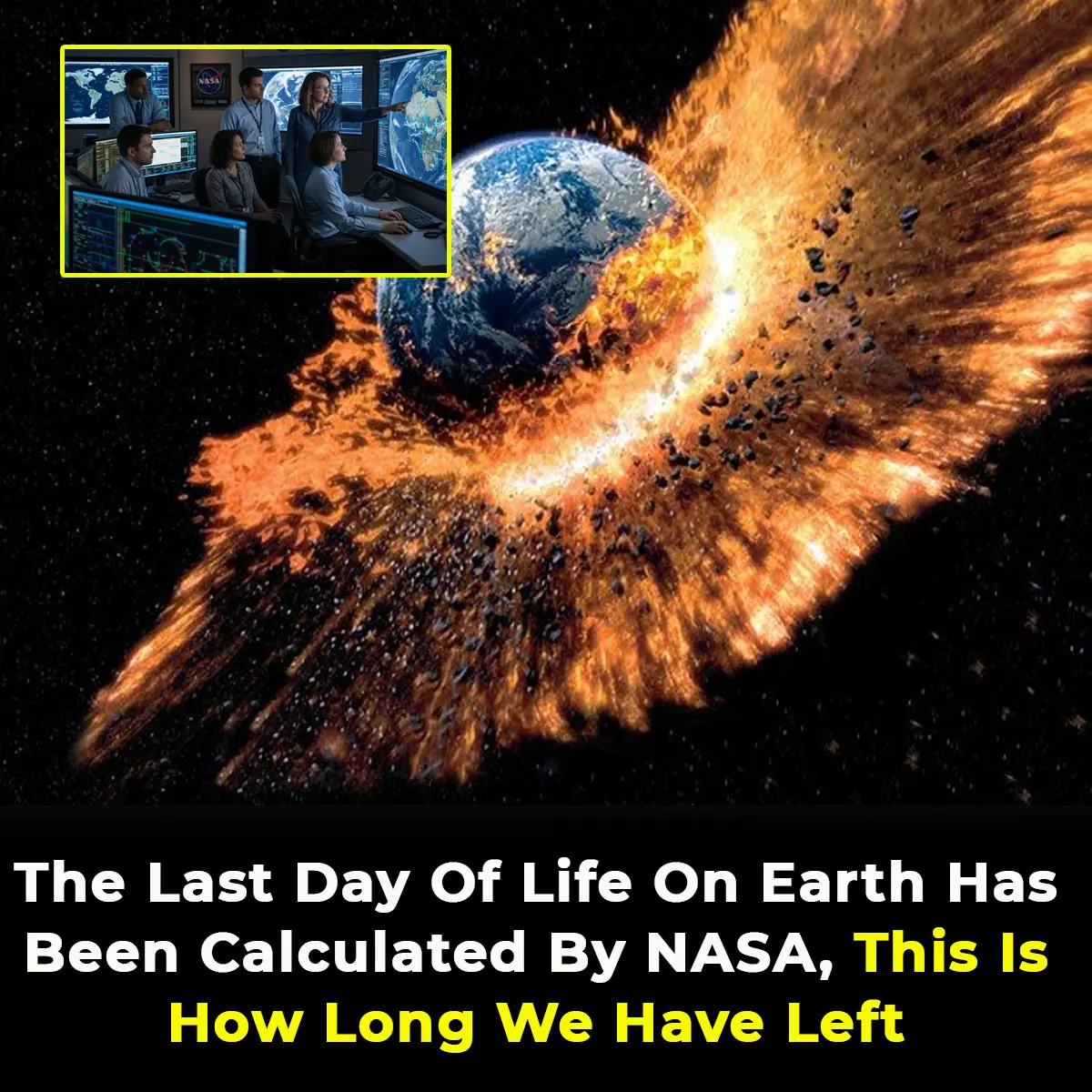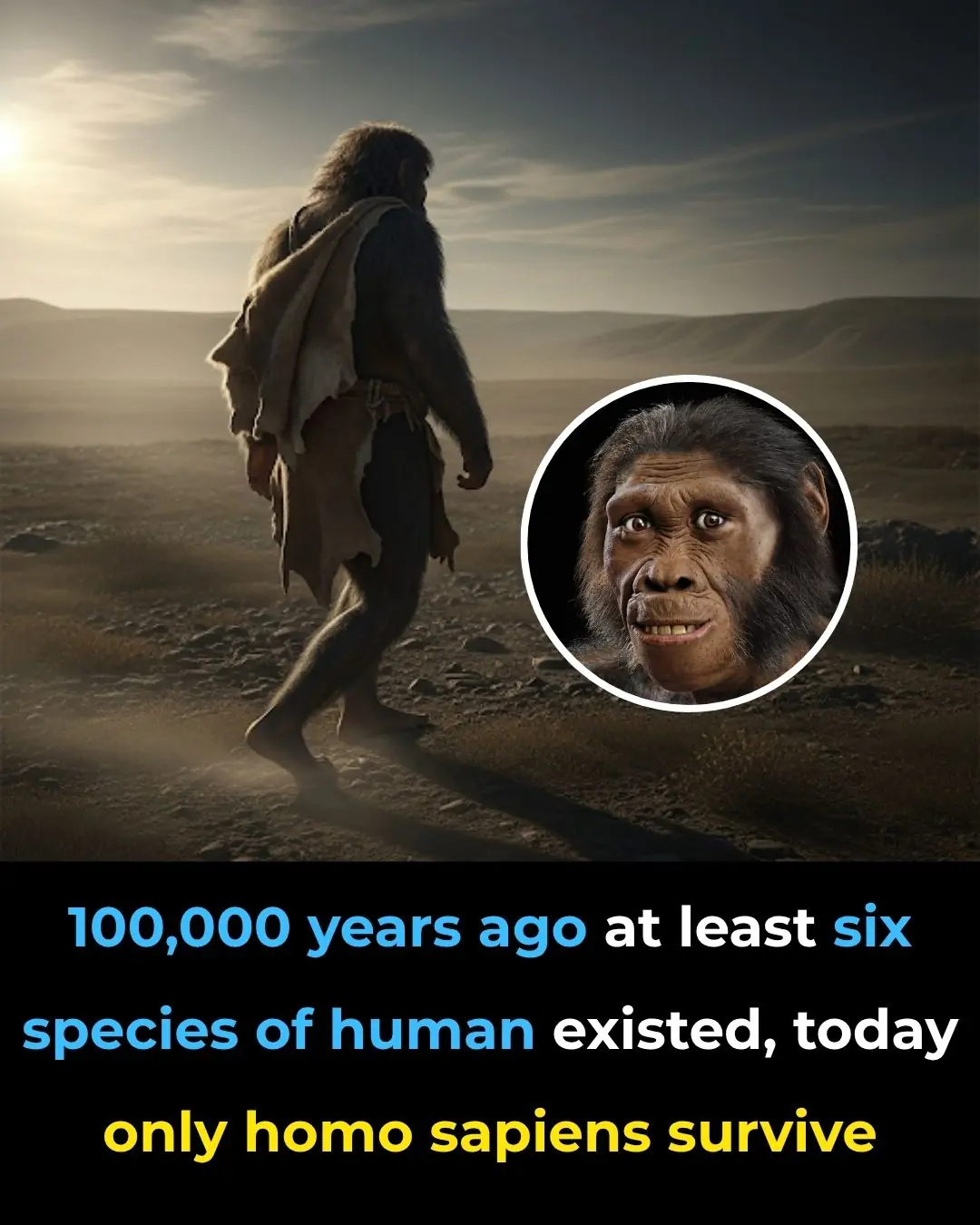
The Last Day Of Life On Earth Has Been Calculated By NASA, This Is How Long We Have Left

The prospect of life on Earth coming to an end is no longer just a science fiction concept. Thanks to advanced astronomical research, NASA has been able to estimate the timeline for Earth's eventual extinction. While our planet still has billions of years before being engulfed by the Sun, the biosphere that sustains life is on a much shorter timescale. The sobering truth is that life on Earth is temporary, and NASA's findings indicate that the countdown for the end has already started.
The Sun's Gradual Transformation
Earth’s fate is inextricably tied to the Sun, the source of energy that supports life. As the Sun ages, it will undergo changes that will have devastating consequences for our planet. According to NASA, over the next five billion years, the Sun will deplete its hydrogen fuel, eventually transforming into a red giant that could potentially engulf Earth. However, the threat to life will emerge much sooner due to the Sun’s increasing luminosity, which will severely impact Earth’s climate and environment.
Rising Temperatures
As the Sun continues to burn through its fuel, it gradually becomes hotter and brighter each year. This increase in solar energy results in a corresponding rise in Earth's surface temperature. Over time, this will lead to a series of environmental shifts, including more frequent and intense heatwaves, longer droughts, and, ultimately, the evaporation of the oceans. These changes will set off a feedback loop that could ultimately result in the collapse of Earth’s ecosystems.
The Moist Runaway Greenhouse Effect
One of the most crucial stages in Earth’s decline, according to NASA, is the onset of the "moist runaway greenhouse effect." As the Sun grows brighter, the amount of water evaporating from the oceans increases, releasing more water vapor into the atmosphere. Since water vapor is a potent greenhouse gas, this will trap even more heat, accelerating global warming. This process will push Earth's climate past the point where life can be sustained, transforming the once vibrant planet into a scorched, lifeless world.
The Decline of the Biosphere
NASA estimates that life on Earth has around 1.5 billion years left. While this may seem like a long period, it is a mere moment in the grand scale of the cosmos. Once the moist runaway greenhouse effect takes hold, Earth's surface will become too hot to support life as we know it. The oceans will boil away, the atmosphere will lose its moisture, and the final remnants of life will be destroyed in the relentless heat.
The Final Stages
In its final phase, Earth will resemble Venus, with surface temperatures reaching unbearable extremes. The Sun, now a red giant, will continue to expand, possibly engulfing Earth in its outer layers. Even if the planet manages to avoid this fate, it will be left as a lifeless, charred rock orbiting a dying star. The end of life on Earth is an inevitable result of the Sun’s natural lifecycle.
What This Means for Humanity
NASA's prediction of Earth's eventual demise serves as a sobering reminder of the vulnerability of life in the universe. While this event is billions of years away, it emphasizes the importance of looking beyond Earth for humanity's future, whether on Mars or further out in the cosmos. As we continue to explore space, understanding the finite nature of our existence may inspire us to push the boundaries of science and technology in our search for a new home.
News in the same category


Man Folded In Half Stands Straight After 28 Years

Mary Ann Bevan: The Tragic Story of the ‘World’s Ugliest Woman’

Missing MH370 aircraft ‘found’ after Google Maps search

Calls for popular smartphone to be banned from planes after another device catches fire

Urgent warning issued to all iPhone users following release of iOS 18.6

Man Releases Chilling Never Seen Before Footage of Twin Tower Collapse

Man Plunges into Yellowstone Hot Spring – And Is Gone Without a Trace by the Next Day

Lip Reader Reveals Shocking Words CEO Said To Woman On Coldplay Kiss Cam

Truth behind viral statement after married CEO caught with employee on Coldplay kiss cam

Boy, 12, Dies After Attempting Viral ‘Blackout Challenge’—Family Issues Heartbreaking Warning

RV Park Owner Describes Terrifying Sound As Floodwaters Swept Families Away

Nuclear Strike Survival Guide: The First 10 Minutes Could Save Your Life

The Incredible Story of a British Airways Pilot Who Survived Being Ejected from a Plane for 20 Minutes

University Of Rhode Island Graduate, 22, Dies Hours After Eating Peanut-Contaminated Snack

Airline Tragedy Followed Cancer Loss: Sisters Orphaned In Catastrophic Week

Tragic selfie reveals hidden danger that took three young lives

Bill Gates Predicts the Only Three Jobs He Believes Will Not Get Replaced by AI

Child who testified against mother in sister’s death speaks out 17 years later
News Post

Tingling Sensation In Your Body: Why Does It Happen

High Blood Sugar Warning Signs

Earth Plunged Into Darkness For Six Minutes In Rare Event Not Seen In A Century

The Hidden Meaning Behind Leg-crossing — It’s More Than Just Comfort

Scientists Warn: Universe’s ‘Self-Destruct Button’ Could Trigger Without Warning

WORLD'S FIRST DATE SOFT DRINK

We weren’t the only humans just the last ones left to tell the tale

Japanese “Baba Vanga” Meme Resurfaces After July 2025 Tsunami Triggers Alerts

Top Signs of Iron Deficiency and How To Increase Iron Levels In Your Blood

Doctors Suspected Baby Had Mouth Tumor—The Shocking Truth Left Them Speechless

Why Some People Never Break A Bone—3 Wild Theories Explained

JAW DROPPING SIMULATION SHOWS WHAT HAPPENS TO YOUR BODY WHILE FASTING FOR 36 HOURS TO ACHIEVE 'FULL RESET'

Why you should always put a coin in the freezer before you leave home

6 Health Benefits of Sleeping In a Cold Room and How to Make it Cooler- And Why You May Not Want to Use a Fan

Dentists Explain What Those Black Triangles Are Between Your Teeth

Heroic Teen Malaya Grace, 17, Dies After Saving Siblings from Drowning in Texas Floods

Silent Walking’ Is The Latest Trend Gen Z Are Obsessed With

Why You Should Never Ever K--ill A House Centipede If You Find One Inside Of Your Home

‘Granny Pods’ Let Aging Parents Stay Close by in Your Backyard
